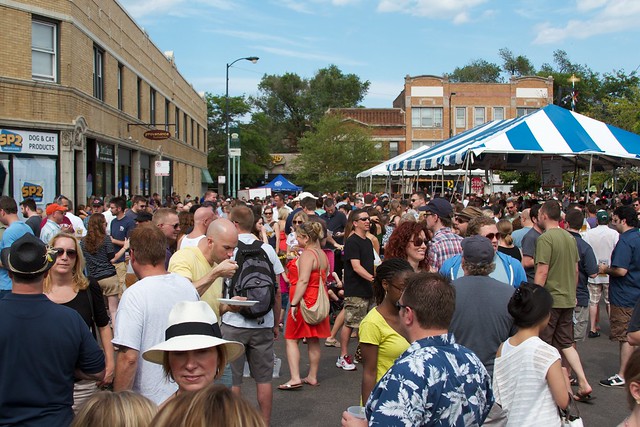
I adore my neighborhood. I’m such a Lincoln Square booster, that my friend, WGN Radio host Justin Kaufmann, recently interviewed me on air to talk about how great it is to live in “Mayberry in the City.”
You don’t need to know why the neighborhood is so great, but let’s just assume you agree with me that it’s walkability, great parks, library, public schools and access to rapid transit make it idyllic, and that plenty of people want to live here. But actually, I don’t have to convince you, since Lincoln Square now has single-family home sales well north of $600,000, a number unimaginable even during the 2008 real estate boom.
Despite the high home prices, it’s hard to characterize Lincoln Square as a wealthy neighborhood – yet. Most of my neighbors bought-in fifteen to twenty years ago, before home sales overheated across the country. But, when new homes are renovated and put up for an open house, my wife and I tend to take a walk through. With Viking ranges and high-end washer-dryers, these new homes don’t seem made for us. Then, when new owners plunk down $1 million to move in, we know the homes weren’t made for us.
What happens to Mayberry in the City when it becomes a place just for the well-to-do?
Boo-hoo, me. Because really, I’m the first wave of gentrification, complaining about the second.
Take a look at the graph below, and you’ll see that much of Chicago’s middle class has been pushed out since 1990, including Lincoln Square. For my neighborhood, I’m part of the first wave of gentrifiers that came in fifteen to twenty years ago (sound familiar?), fixed up the schools, encouraged more local retail and made it a generally fun place to live. Now the people with lots more money want in, and I’m seeing the change.

And this isn’t the first time I’ve been a part of the first wave. Back in 1978 my mom and step-dad bought a brick three-flat in Lincoln Park, which was then a working class, Puerto Rican neighborhood. My parents renovated the house – one of the first on the block – and turned it into a single-family with a garden level apartment for rent. As a younger kid I played streetball with the other kids on the block (“Car!”) but by the time I graduated high school the kids didn’t play out front any more and the streets were lined with cars too expensive to get caught slamming into when you catch a football.
Over the years, Lincoln Park got even more expensive, and more exclusive. My parents’ block was landmarked, and then after my mom passed, my step-father declared the neighborhood’s property taxes too high (he was paying more than I paid in rent for a one bedroom apartment in Chicago) and he sold the house in 2005 for nine times more than he paid in 1978.
A first wave gentrifier, it’s hard to see how my step-father did well for himself. But there was no way I could ever afford to own a home in the neighborhood I grew up in – and for many Chicagoans, there was no way they could ever rent an apartment there either.
And so I look at where I live now: Lincoln Square. Who will be able to afford to live in Mayberry in the City?
For now, not many. It has been a struggle to add density the neighborhood. Most of the two-flats that characterized the area have been converted to single-family homes (we hope to do the same one day) and there’s few areas where there’s enough space for five or six-story apartment buildings, the height needed to make such a project profitable for developers.
Our new City Council member, Matt Martin, ran on platform that included adding affordable housing to Lincoln Square, but that means getting developers that want to do it. Oh, and they’ll need to purchase land that is relatively low-cost.
Western Avenue, one of the main north-south thoroughfares through Lincoln Square, was once covered with used car lots, car repair and other light industrial businesses. Those have mostly shuttered in the last ten years, to be replaced with drive-through Starbucks, high-end shopping or land banked, until a developer buys the land to turn into condos. Those new two-bedroom (never three or four) condos in three-story buildings tend to have prices starting around $400,000. With those kinds of prices, how could Lincoln Square ever be home to affordable housing?
The answer is density. Lincoln Square needs more six- and seven-story buildings, so more units can be built more cheaply on the same piece of land, and developers can be forced to offer more affordable housing units.
Imagine seven stories! Two years ago a new six-story building was slated for the end of my block on Western Avenue. The community opposition was significant – it was cut down to five, and still the neighbors grumbled.
I’d really like my Mayberry in the City to be more inclusive, because I just don’t want it to end up like Lincoln Square. But to get there, me and my neighbors are going to have to give up some of the “Mayberriness” and build some tall apartment buildings.